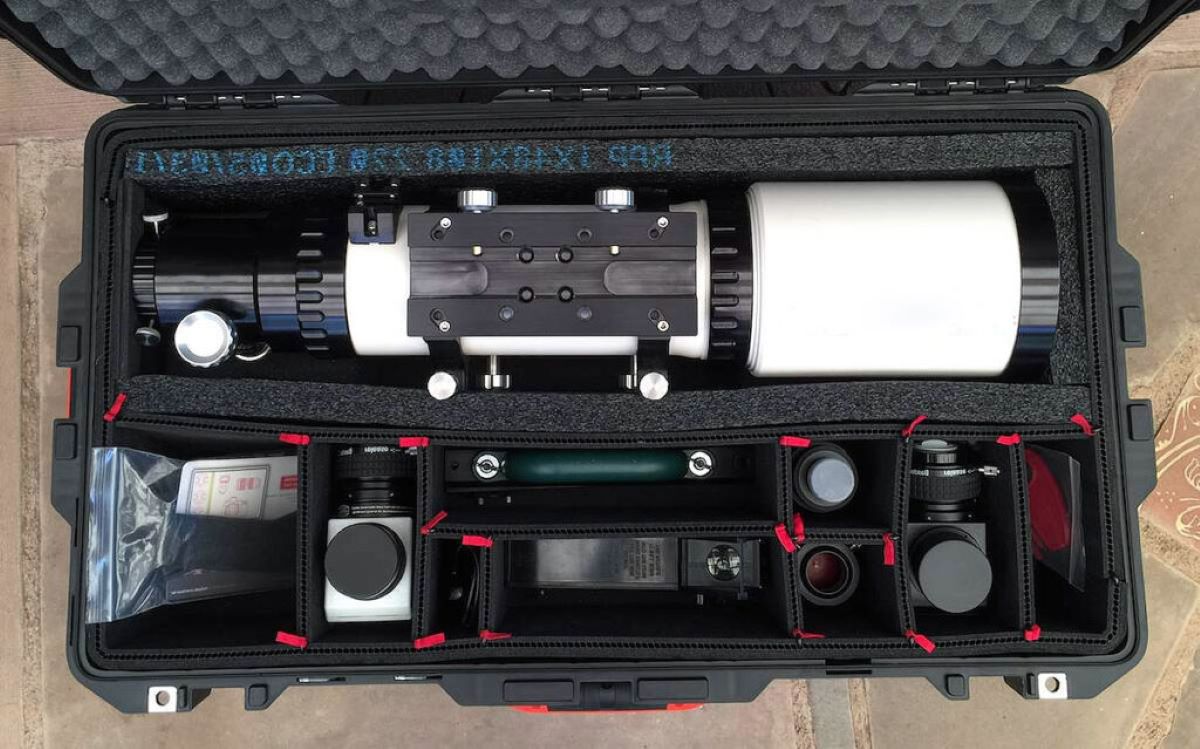

Articles
How To Store Seitan
Modified: December 7, 2023
Learn the best techniques for storing seitan with our informative articles. Keep your seitan fresh and delicious with our expert tips and advice.
(Many of the links in this article redirect to a specific reviewed product. Your purchase of these products through affiliate links helps to generate commission for Storables.com, at no extra cost. Learn more)
Introduction
Welcome to the world of seitan, a versatile and protein-rich meat substitute that is a staple in many vegetarian and vegan diets. Made from wheat gluten, seitan provides a satisfying texture and can be flavored in a variety of ways to mimic the taste of meat. Whether you are a longtime seitan enthusiast or just starting to explore this plant-based protein, it’s important to know how to store seitan properly to ensure its freshness and taste.
In this article, we will guide you through the ins and outs of seitan storage, including the best practices for refrigeration and freezing, and provide tips to extend its shelf life. Whether you make your own seitan from scratch or purchase pre-packaged varieties, understanding the proper storage methods can make a significant difference in maintaining its quality and flavor.
So, let’s dive in and learn why proper seitan storage is important and what factors to consider when storing seitan.
Key Takeaways:
- Proper seitan storage is crucial for maintaining its freshness, texture, and flavor, ensuring it remains safe to consume and minimizes food waste.
- Factors such as temperature, humidity, airtight containers, and suitable storage duration are key considerations for preserving seitan’s quality and taste.
Read more: How To Store Basil From Store
Why is Proper Seitan Storage Important?
Proper seitan storage is essential to maintain its freshness, texture, and flavor. Here are a few reasons why it’s important to store seitan correctly:
- Prolongs Shelf Life: Seitan, like any other food, has a limited shelf life. Storing it properly can help extend its freshness and prevent spoilage. This is especially important if you buy or make seitan in bulk and want to enjoy it over an extended period.
- Preserves Texture: Seitan has a unique chewy texture that can be compromised if not stored correctly. Humidity and improper storage can result in a soggy or mushy consistency. By following the proper storage guidelines, you can help preserve its desired texture.
- Maintains Flavor: Seitan absorbs flavors well, making it a versatile ingredient in various recipes. However, improper storage can lead to flavor loss or the absorption of unpleasant odors from other foods in the fridge or freezer. Storing seitan correctly helps retain its delicious taste.
- Reduces Food Waste: Storing seitan properly reduces the likelihood of it spoiling or going bad, which in turn helps reduce food waste. By following the proper storage practices, you can ensure that your seitan remains fresh and ready for use, minimizing the need to throw away spoiled portions.
Now that you understand the importance of proper seitan storage let’s explore the factors to consider when storing seitan:
Factors to Consider for Seitan Storage
When it comes to storing seitan, there are a few factors to keep in mind to ensure its longevity and quality. Let’s take a look at these factors:
- Temperature: Seitan should be stored at a consistent and cool temperature to prevent bacterial growth. The ideal temperature for storing seitan is between 32°F and 40°F (0°C and 4°C). This temperature range helps slow down the spoilage process and maintains the seitan’s freshness.
- Humidity: Seitan is best stored in a low-humidity environment. High humidity can lead to the growth of mold on the surface, which can adversely affect the seitan’s taste and texture. It’s important to keep the seitan dry and away from moisture-prone areas.
- Airtight Containers: Seitan should be stored in airtight containers or sealed plastic bags to prevent moisture and air exposure. Oxygen can cause the seitan to deteriorate more quickly, while excess moisture can lead to spoilage. Properly sealed containers help maintain the seitan’s quality and protect it from external factors.
- Separation from Liquids: When storing seitan, it’s crucial to keep it separate from any liquids, such as marinades or sauces. If seitan comes into contact with liquids for an extended period, its texture can become soggy or mushy. Consider storing it in a separate container or using a sealable bag to avoid any potential liquid absorption.
- Suitable Storage Duration: Seitan is best consumed within a specific timeframe to ensure optimal taste and texture. While the exact duration can vary based on the preparation and storage conditions, it is generally recommended to consume refrigerated seitan within 3-5 days and frozen seitan within 2-3 months.
By considering these factors, you can ensure that your seitan stays fresh, flavorful, and ready to use. In the next sections, we will discuss the best storage practices for both the refrigerator and freezer.
Refrigerator Storage
The refrigerator is a convenient and commonly used storage option for seitan. Follow these guidelines to ensure proper refrigeration of your seitan:
- Transfer to an Airtight Container: If you have store-bought seitan that came in a package, it’s best to transfer it to an airtight container before refrigerating. If you made seitan at home, store it in an airtight container right from the start. This helps maintain freshness and prevents moisture loss.
- Cover the Seitan: If you don’t have an airtight container, cover the seitan tightly with plastic wrap or aluminum foil to prevent air exposure and moisture loss.
- Place in the Coldest Part: Find the coldest spot in your refrigerator, usually the back of the bottom shelf, and store the seitan there. Avoid placing it near the door, as temperature fluctuations can occur whenever the door is opened.
- Separate from Raw Foods: To prevent cross-contamination, store seitan separately from raw meat, poultry, or fish. Raw juices can potentially come into contact with the seitan and compromise its quality.
- Check for Spoilage: Periodically check the seitan for any signs of spoilage, such as an off smell or texture. If you notice any signs, discard it immediately to avoid consuming spoiled seitan.
Following these guidelines will help maintain your seitan’s freshness and ensure it stays safe to consume. However, if you have a larger batch of seitan or don’t plan on using it within a few days, freezing it is a great alternative.
Store seitan in an airtight container in the refrigerator for up to 5 days. You can also freeze it for up to 3 months. To freeze, wrap it tightly in plastic wrap and place in a freezer-safe bag. Thaw in the refrigerator before using.
Freezer Storage
Freezing seitan is an excellent option for long-term storage, allowing you to extend its shelf life while preserving its quality. Here’s how you can properly freeze seitan:
- Wrap and Label: Divide the seitan into portion sizes that you are likely to use at once. Wrap each portion tightly in plastic wrap or place them in individual freezer bags. Label each package with the date of freezing to keep track of its freshness.
- Double Wrapping: For added protection against freezer burn, consider double wrapping the seitan by placing the individually wrapped portions in airtight freezer bags or freezer-safe containers.
- Remove Excess Air: When using freezer bags, squeeze out as much air as possible before sealing them. This helps prevent freezer burn and maintains the quality of the seitan.
- Store in the Freezer: Place the wrapped seitan portions in the coldest part of the freezer, such as the back or the bottom shelf, to ensure proper freezing and temperature maintenance.
- Use within 2-3 Months: It’s recommended to use frozen seitan within 2-3 months for optimal taste and texture. While seitan can remain safe to consume beyond this time, its quality may deteriorate over an extended period.
Properly frozen seitan can be thawed and used in a variety of recipes, such as stir-fries, stews, sandwiches, or grilled dishes. When ready to use, thaw the seitan in the refrigerator overnight or gently defrost it in the microwave using the defrost setting.
Keep in mind that freezing may slightly alter the texture of seitan, resulting in a slightly firmer or chewier consistency. However, it will not significantly impact its taste or versatility as an ingredient.
Now that you know how to store seitan in the refrigerator and freezer, let’s explore some additional tips to ensure your seitan stays in optimal condition for as long as possible.
Read more: How To Store Store-Bought Bread
Tips for Properly Storing Seitan
To maximize the freshness and quality of your seitan, consider implementing these additional tips for proper storage:
- Don’t store for too long: While seitan can be stored for a reasonable amount of time, it’s best to use it within its recommended storage duration. Freshly made seitan generally has a shorter shelf life compared to store-bought varieties.
- Keep it dry: Moisture is the enemy when it comes to seitan storage. Ensure your seitan is completely dry before storing it and avoid contact with any liquid or condensation.
- Avoid temperature fluctuations: Even though seitan is stored in the refrigerator or freezer, it’s important to minimize temperature fluctuations as much as possible. Avoid leaving the refrigerator or freezer door open for extended periods.
- Consider vacuum sealing: If you have access to a vacuum sealer, consider using it to remove all the air from the seitan packages before freezing. This will further protect the seitan from freezer burn and extend its shelf life.
- Properly defrost before use: When thawing frozen seitan, do so in the refrigerator overnight or use the defrost function on your microwave. This allows for a gradual thawing process and ensures even defrosting.
- Store smaller portions: If you find yourself not using seitan frequently, consider dividing it into smaller portions before storing. This way, you can thaw only what you need, reducing the risk of waste.
By following these tips, you can maintain the freshness, texture, and flavor of your seitan, ensuring it’s always ready to be enjoyed in a variety of delicious dishes.
Now, let’s address some common questions about seitan storage.
Frequently Asked Questions (FAQs)
Here are some common questions about seitan storage:
1. Can I store seitan at room temperature?
It is not recommended to store seitan at room temperature for an extended period. Seitan is perishable and can spoil quickly at room temperature, leading to foodborne illnesses. Always store seitan in the refrigerator or freezer to maintain its freshness and safety.
2. How do I know if seitan has gone bad?
Signs of spoiled seitan include a sour or foul smell, slimy or mushy texture, or the presence of mold. If you notice any of these signs, it’s best to discard the seitan to avoid any potential health risks.
3. Can I refreeze seitan after thawing?
It is generally not recommended to refreeze seitan once it has been thawed. Freezing and thawing can affect the texture and overall quality of the seitan, and refreezing it again may further diminish its taste and texture. The best practice is to thaw only the amount you need.
4. Can I store seitan marinades with the seitan?
To maintain the quality of seitan, it’s best to store it separately from any marinades or sauces. If you marinate the seitan and don’t plan to use it immediately, drain the excess marinade and store the seitan on its own. This prevents excessive moisture and potential flavor absorption.
5. Can I store homemade seitan differently from store-bought seitan?
Whether homemade or store-bought, the storage guidelines for seitan remain the same. Transfer homemade seitan to an airtight container and follow the same storage practices to maintain its freshness. Store-bought seitan may already be packaged in an airtight container, but if not, transfer it accordingly.
These are just a few frequently asked questions about seitan storage. Now, let’s wrap up our discussion.
Conclusion
Proper storage is crucial for maintaining the freshness, texture, and flavor of seitan. By following the guidelines discussed in this article, you can ensure that your seitan stays in optimal condition, whether stored in the refrigerator or freezer.
Remember to consider factors like temperature, humidity, and airtight containers when storing seitan in the refrigerator. Keeping it separate from raw foods and periodically checking for signs of spoilage are also important practices to follow.
When it comes to freezer storage, wrapping and labeling portions of seitan, properly removing excess air, and using within the recommended time frame are essential steps to maximize its quality. Thaw frozen seitan in the refrigerator or use the defrost function on your microwave to ensure even defrosting.
By implementing additional tips such as avoiding excessive moisture, preventing temperature fluctuations, and considering vacuum sealing, you can further enhance the storage life of your seitan.
Remember, seitan is a versatile and delicious plant-based protein, and proper storage plays a vital role in its longevity and enjoyment. With the right storage practices, you can ensure that your seitan is always ready to be used in various recipes, providing you with a satisfying and nutritious meat substitute.
So, now that you’re equipped with the knowledge of proper seitan storage, go ahead and confidently stock up on or make your favorite seitan knowing that you can enjoy it at its best for an extended period.
Frequently Asked Questions about How To Store Seitan
Was this page helpful?
At Storables.com, we guarantee accurate and reliable information. Our content, validated by Expert Board Contributors, is crafted following stringent Editorial Policies. We're committed to providing you with well-researched, expert-backed insights for all your informational needs.















0 thoughts on “How To Store Seitan”